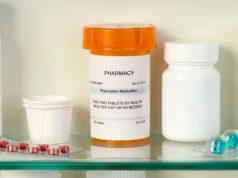Office visits for drug to treat opioid use disorder most commonly self-pay or private insurance
MONDAY, May 20, 2019 (HealthDay News) — Black patients are less likely to receive a buprenorphine prescription to treat opioid use disorder, according to a research letter published online May 8 in JAMA Psychiatry.
Pooja A. Lagisetty, M.D., from the University of Michigan in Ann Arbor, and colleagues used data from the National Ambulatory Medical Care Survey and the National Hospital Ambulatory Medical Care Survey outpatient department component (2004 to 2015) to evaluate trends in buprenorphine treatment at office-based visits in the United States. Race/ethnicity and payment characteristics were evaluated.
The researchers found that during the study period, the number of buprenorphine visits rose from 0.04 to 0.36 percent of all ambulatory visits, representing 13.4 million visits. White patients received a buprenorphine prescription at considerably more visits compared with patients of other races/ethnicities (12.7 million versus 363,000) from 2012 to 2015. Across all years, self-pay and private insurance were the most common payment methods. Visits by self-pay patients dramatically increased from 585,568 visits in 2004 to 2007 to 5.3 million visits in 2012 to 2015, accounting for 39.6 percent of visits. Black patients had statistically significantly lower odds of receiving a buprenorphine prescription at their visits after accounting for payment method, sex, and age (adjusted odds ratio, 0.23).
“With rising rates of opioid overdoses, it is imperative that policy and research efforts specifically address racial/ethnic and economic differences in treatment access and engagement,” the authors write.
Abstract/Full Text (subscription or payment may be required)
Copyright © 2019 HealthDay. All rights reserved.








